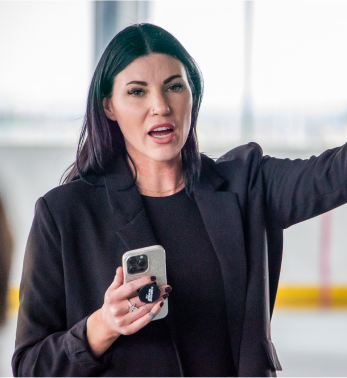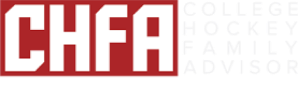College Hockey Family Advisor
To get from 16U AAA to 18U AAA to Tier 2 Junior Hockey to USHL then finally to NCAA Div 1 or 3 requires people that do this 365 days a year and have a Global staff.


CHFA Advisors /Staff
Darryl Wolski
President (Minneapolis USA /Winnipeg Canada)
dwolski@chfahockey.com
Harry Mahesh
Player Director (Toronto Canada)
hmahesh@chfahockey.com
Neil Manning
(Vancouver - Video Coaching)
neil@hockeyvideotraining.com

WHY CHOOSE US
To get from 16U AAA to 18U AAA to Tier 2 Junior Hockey to USHL then finally to NCAA Div 1 or 3 requires people that do this 365 days a year and have a Global staff.
We can help you regardless if you live in Russia – Europe – Asia or North America. We have local advisors that can speak in your language.
CHFA have now been in business for over 20 years and we have helped players from all over the world start their road to success and playing college hockey.
It is a complex path to NCAA Hockey and yet some basic points are needed to get to this level.
– Solid marks in school – GPA / SAT / ACT scores and results.
– Schools really want a family that cause no issues.
– Players that prove to be good people off the ice and volunteer etc
– Hockey players that fit a role and have upside to potentially move on to pro hockey.
This is a difficult question but normally speaking you will need some direction and guidance when players are 15,16, and 17 years old. Advisors in our opinion are not required for players that are younger than those ages.

CHFA Advisors /Staff
NCAA Recruiting (11
Division I men’s college hockey coaches are not allowed to have recruiting conversations with prospective student-athletes until Jan. 1 of their sophomore year (grade 10) in high school. That means they cannot reply to emails, text messages, or return phone calls prior to that date.
As of April 2019, this prohibition also includes in-person conversations and phone calls initiated by prospects. If a prospect does come in contact with a coach prior to Jan. 1 of their sophomore year, NCAA rules require that the coach not engage in a recruiting conversation.
No. As of April 2019, all recruiting conversations with prospects and their families, coaches and advisors are prohibited prior to Jan. 1 of the prospect’s sophomore year.
College hockey coaches spend a tremendous amount of time and energy scouting and recruiting potential student athletes. If you play for a competitive midget minor, midget major, junior, or high school team, and are an elite player, there is a good a chance that the college coaches know about you.
We highly recommend that American players try out for the USA select festivals that are held in Buffalo, N.Y., every summer. We also recommend you make a list of the schools you are interested in and visit their respective web sites and team pages. Most college hockey teams have a “recruiting questionnaire” on their team web site and it would be beneficial to fill out a questionnaire for each school that interests you.
It can also be worthwhile to create a “hockey resume” to introduce yourself to college coaches. Click here for tips on writing a hockey resume.
More than a dozen junior and high school leagues send players directly to Division I – so in simple terms, there is no right answer. If you are good enough, college coaches will find you.
To learn more about the various options click here for links to the various developmental leagues.
NCAA rule changes in 2018 and 2019 impacts when prospective student-athletes may visit with college coaches on their campuses.
An official college visit is a 48-hour, expense-paid visit. An official visit cannot be taken until August 1 of the prospective student-athlete’s 11th-grade year in high school. A student athlete is allowed (5) five total official visits but only (1) one per school.
An unofficial visit is paid for by the student-athlete, can last any length of time and there is no limit to the number of unofficial visits a student can take. Unofficial visits may not take place until January 1 of the prospective student-athlete’s 10th-grade year in high school. During an unofficial visit the coaching staff may meet with a prospective student athlete and provide him with a tour of the campus and facilities.
Prospective student-athletes may visit college campuses at any time, but prior to January 1 of their 10th-grade year they may not have recruiting conversations with college coaches during their visit.
If you play a junior A hockey game after your 21st birthday you will lose one year of NCAA athletic eligibility, leaving you with three years remaining (this rule applies only to Division I competition).
Student-athletes can retain their four years of NCAA eligibility and play a junior A game after turning 21 if they enroll full-time in a post-secondary institution. Full time status is determined by the school in which the student athlete enrolls. While this starts a student-athlete’s five-year eligibility “clock,” they could use their full four years of eligibility provided that they enroll at the NCAA Division I school the following fall. The institution in this case may not be a nonterm institution with rolling enrollment and the classes must have a definitive start and end date. It also cannot field a varsity hockey program (in the U.S. or Canada) or the student-athlete would be subject to NCAA transfer rules.

Sabrina
Brandon Canada



